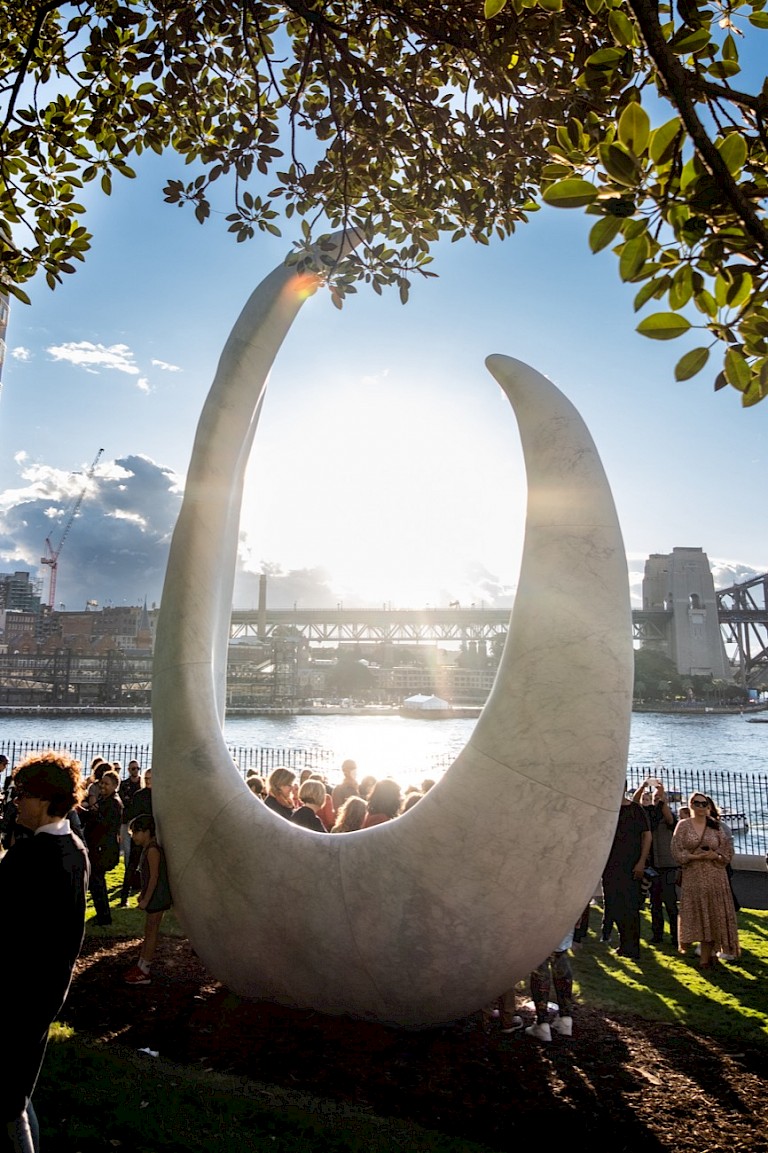



The Artist
Judy Watson was born in 1959 in Munduberra, Queensland, Australia and lives and works in Brisbane. Watson’s matrilineal family is from Waanyi country in Northwest Queensland and her work is inspired by traditional Waanyi culture. The artist uses printmaking, drawing, painting, installation, and other media to explore themes relating to her Aboriginal heritage.Watson co-represented Australia in the 1997 Venice Biennale and won the Moet & Chandon Fellowship in 1995. Her work is held in major Australian and international collections including the National Gallery of Australia, the Australian State Art Galleries, Taipei Fine Arts Museum, St Louis Art Museum, US, The British Museum and Tate, London, as well as significant private collections.Her ability to weave cultural history, traditional knowledge, and storytelling into her creative practice results in multidimensional, culturally significant, poetic, and thought-provoking work. Her ancestral connection to the Waanyi language group in North-West Queensland, known as “running water” people, is intrinsically embedded in her deep-seated interest in bodies of water, ground water and springs, and their significance to Australian First Nations’ narratives and histories, linking ancient and contemporary knowledge and identities.
Eora Journey is a public art programme that works with Aboriginal and Torres Strait Islander artists to create major public projects symbolising First Nation journeys and narratives of place in the Sydney area. Eora means “the people” in the Gadigal language, so the Eora Journey project represents and tells the story of “the people’s journey,” and aims to address the need for greater recognition of the heritage and living culture of local indigenous peoples. The projects are overseen by curatorial advisor Hetti Perkins and Yananurala curator Emily McDonald and are part of the broader City Art programme run by the City of Sydney. Consultation with local community members and Gadi custodians plays a crucial role in this project, underpinning one of the key components of Eora Journey, which is recognition of indigenous stories in the public domain.To help structure and guide the development of the public art projects commissioned for Eora Journey, Curatorial Advisor Hetti Perkins and architect Julie Cracknell undertook an international review of cultural interpretation to provide context for their work and to embed it in community consultation in conjunction with the City of Sydney’s Aboriginal and Torres Strait Advisory Panel, established in 2008. To date, four public artworks have been commissioned through the programme: Reko Rennie’s Welcome to Redfern, a mural on a terraced house in Redfern commemorating Aboriginal history, activism, and aspirations for the future, produced with local young Aboriginal artists during a series of street art workshops in 2012-13; Nicole Foreshaw’s Born in darkness before dawn, a four-month projection onto the Australian Museum (2013); Yininmadyemi, Thou didst yet fall, by artist Tony Albert, acknowledging Aboriginal and Torres Strait Islander men and women who served in the nation’s military; and Judy Watson’s bara (2022). Watson’s concept was selected from a highly competitive field by a panel whose members included Aboriginal curators, the Metropolitan Local Aboriginal Land Council, architects, and State gallery representatives, and was subsequently endorsed by the Aboriginal and Torres Strait Islander Advisory Panel of the City of Sydney.The public art programme sits alongside other components of the Eora Journey project, including an economic plan to address the Aboriginal community’s access to education, employment and training opportunities, and an Aboriginal knowledge and cultural hub in Redfern.Eora Journey was initially developed for Sustainable Sydney 2030, as a series of cultural projects, including storytelling events, interpretive markers, and public artworks linked by a walk from the site of first contact on Warrane/Sydney Harbour to Redfern, a centre for Aboriginal activism in Australia. The harbour walk is called Yananurala: “walk Country” in Gadigal language. The programme is part of the City of Sydney’s commitment to a holistic approach to urban spatial design, which is articulated through the voices and cultural knowledge of Country and Aboriginal people in public and social space. The City of Sydney have stated that: “Engagement that informed the project commenced in 2007 during consultation on Sustainable Sydney 2030, where 87% of the community called for greater recognition of Aboriginal and Torres Strait Islander people in the public domain.” Judy Watson’s bara crystalizes the City of Sydney’s intention to acknowledge the complexity of “Country” as an inter-relational term for Aboriginal peoples – a concept that embraces the water, winds, seasons, and constellations as part of the ecologies of place, stories and memories that honour all who have lived and those yet to be born.
Judy Watson’s intention for bara was that it “…connects the viewer to the bloodline of ochre that flows along the harbour’s significant sites... magical, uplifting, giving this space an other worldly feeling, dreamlike and beautiful.” This poetic response to a political imperative – recognition, reconciliation and structural support for local First Nation cultures – is testament to the strength of City of Sydney’s vision and willingness to pursue the wide-ranging aims of Eora Journey in the context of indigenous custodial hands.



